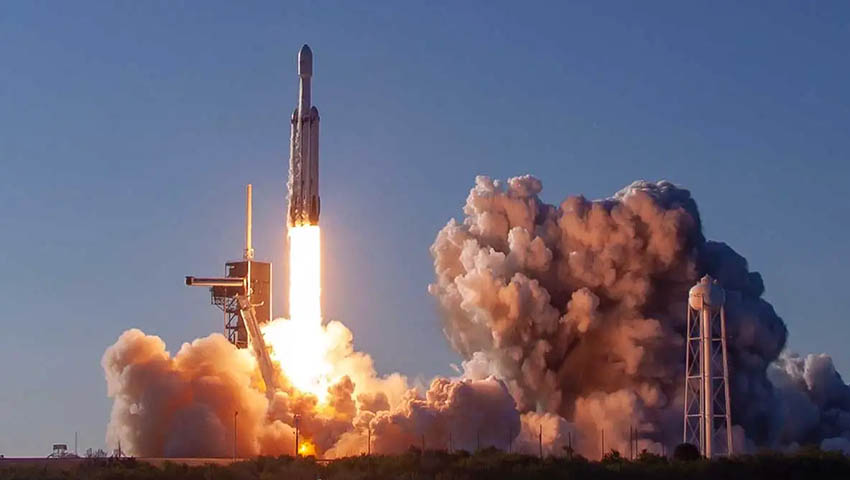Admittedly the passengers weren’t appreciating the experience as they were long dead, their ashes placed in low-Earth orbit as a lucrative sideline of the space launch business.
Of greater relevance to Australia was the launch of the six COSMIC-2 weather satellites designed to improve global weather forecasting and space weather monitoring.
Satellite data underpins the weather and climate services delivered by the Australian Bureau of Meteorology, and the COSMIC-2 mission was expected to bring major benefits to Australia, including better storm forecasting, especially in warm, tropical areas near the equator.
Bureau of Meteorology chief data officer Dr Anthony Rea, said the bureau was pleased to be playing a role in this international effort.
"The bureau's technical experts will be working closely with our international partners to ensure the successful deployment of the COSMIC-2 satellites and monitoring them from the bureau's ground station in Middle Point, Northern Territory," he said.
"The bureau has a large network of ground stations from which we can send and receive signals from satellites. This enables us to make a valuable contribution to international space missions, such as COSMIC-2. In the case of COSMIC-2, we will be sending commands to the satellites as well as downlinking real-time data."
COSMIC is actually an acronym for Constellation Observing System for Meteorology, Ionosphere and Climate. COSMIC-2 follows the initial COSMIC satellite mission, launched in 2006.
Each COSMIC-2 satellite is about the size of a standard kitchen oven and carries a precision GPS receiver.
As COSMIC-2 satellites orbit the Earth, they receive signals from GPS satellites that are distorted as they pass through the Earth’s atmosphere, a process known as radio occultation.
COSMIC-2 can detect those distortions in the signal that can be used to determine atmospheric density, temperature, pressure and moisture in near real time.
As secondary payloads, COSMIC-2 also carry three instruments to detect electron density and other space weather information.
The first COSMIC mission satellites circled the Earth in near polar orbits but COSMIC-2 satellites will orbit near the equator, taking measurements of the tropics and subtropics, and monitoring the ionosphere for the effects of solar storms.
This was the third Falcon Heavy launch but the first contracted by the US military for the the US Air Force Space Test Program-2 (STP-2), designed to provide lower cost launches by commercial providers.
To reduce costs, the aim is to reuse rocket components. Two side boosters landed back at Cape Canaveral several minutes after liftoff, as they did after the launch in April. The nose cone was caught in a giant net at sea.
However, the new core booster missed an ocean platform in what SpaceX boss Elon Musk termed a RUD – rapid unscheduled disassembly. That wasn’t unexpected as this was a difficult mission with success billed as no higher than 50-50.
On this mission was the US Orbital Test Bed satellite, carrying a number of science experiments including NASA’s Deep Space Atomic Clock intended to test the performance of a small highly accurate clock, which could aid in navigation for future deep space missions.
This satellite also carried a payload from Celestis, a company that organises for cremated remains of people and even their pets to be sent into space.
Remains sent into orbit stay within their capsules in the satellite and burn up when the satellite re-enters the atmosphere.
The basic service costs US$2,495 to go to the edge of space and back to Earth, US$4,995 to be placed in orbit and US$12,500 for remains to be sent to the moon.

